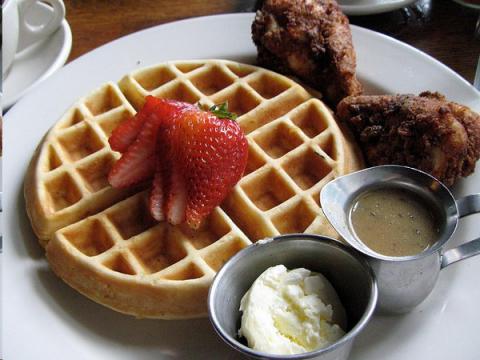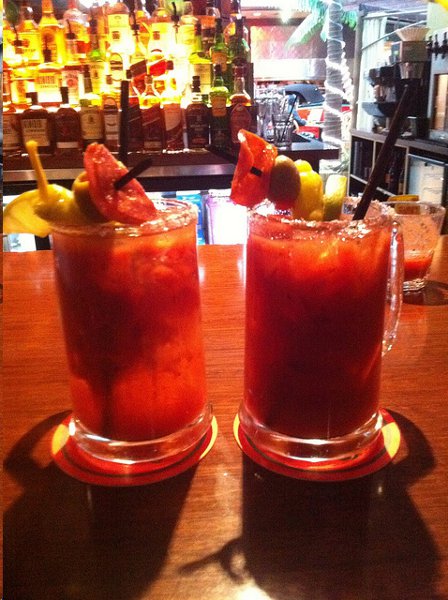From Bagels to Food Trucks: America’s Food Legacy Abroad

American food gets a bad rap abroad. Apart from the fact that our typical choice in culinary invention seems to be taking something “ethnic and exotic” and putting our own greasy spin on it, our somewhat traditional dishes tend to be fattening, loaded with useless innutritious ingredients, and typically just all around bad for the waistline. Recent reports showing that the popularity of American fast food chains abroad may be massively impacting rates of obesity and weight-related illnesses have only served to help keep our culinary reputation well below par. Yet, aside from the bad press that has been admittedly deserved, a new trend has recently taken off that shows American food today is not only flourishing abroad, but is finally being respected for the innovation and creativity that by which it has long been characterized.
The rise of a reputation
Perhaps the most interesting effect that American food has had abroad has been its recent ability to become trendy after years of being looked down upon. This movement is perhaps most notable in Asia, where the popularity of American cuisine has been primarily linked to an increased amount of fast food chains that have popped up everywhere from China to Japan and the Philippians to Thailand. As McDonald’s, KFC, and even Carl’s Jr.s’ have opened their doors all over the region, the obvious link with the sudden rise in obesity has been widely noted.
Fueled by a sudden rise in economic development, countries like Vietnam that have a large population of people that remember times much less affluent are now ready and willing to welcome an era characterized by the freedom to eat as much of whatever they wish. Unfortunately for their waistlines, the most popular of the frivolous foods that are widely available happen to be high in fat and served fried with a side of extra sweet soda.
Yet, in the face of such obvious links, the fast food industry in Asia has also shown signs of something a bit unusual. Unlike in the United States, where fast food is perceived as a time-saving and cheaper alternative to higher quality foods that offer better forms of nourishment, in Asia, places like Burger King and Pizza Hut are touted as ‘high-class’ due their relatively higher prices. In addition to its high price tag, American fast food chains are also viewed by many as exotic, creative, and fun thanks to ad campaigns that typically tie the food to large scale popular Western films, a drastically new innovation in countries whose media is otherwise widely controlled by the government. The added effect of this has been that fast food, and thus, American fare, is perceived as a popular food item typically enjoyed by only the hippest members of society that are also blessed with disposable incomes. Gourmet? Hardly, but that doesn’t seem to be stopping the crème de la crème of society from treating it as a badge of economic security and their permanent transition into prosperity.

Breaking into the European market
McDonald’s might have taken off in France years ago, but it was the introduction of something even more casual that has the trendiest of Parisians talking today. Within the past year, something very American has been stirring on the streets of Paris, as well as in some of its finest kitchens. In a land that very recently was at the forefront of declaring that American food was nothing more than grease and a lack of imagination, suddenly, there is no greater praise for food amongst the young Parisians than “très Brooklyn,” a term that has come to symbolize something particularly cool and of high quality, not in spite of but because of its informality and creativity.
Just a few years ago many would have laughed had you suggested that in 2012, the most popular trends in French cuisine would include bagels, Bloody Marys, cheesecake, and even tacos. However, today anything hipster cool seems to come straight off the streets of the very trendy Brooklyn. Not only are gourmet American-inspired restaurants opening up all over town – like the super hip upscale taco joint Candelaria in the Marais – but some of Paris’ hippest kitchens have been turning their reigns over to American chefs, hoping for a little cool to rub off.
However, perhaps the biggest change on the French scene has come from the ultimate in business vehicles: the food truck. Sneered at by many as an unlikely fit for the French, these gourmet American fare setups on wheels have been all the rage in a city that formerly refused to accept street food, let alone something as American as a burger, or - god forbid – taco. Yet, as food trucks selling 10-euro burgers and 7 euro stuffed tacos are boasting lines around the corner, it seems that today, the more uniquely informal and American, the better. So while American food might not have started out with the highest of international praise, it seems that its creativity just might be finally making its mark for good.
Author Bio:
Evelyn Robinson is a contributing writer at Highbrow Magazine.
Photos: Anne Larie Valentine, Francis Storr (Flickr, Creative Commons).




























































































































































































































































































































